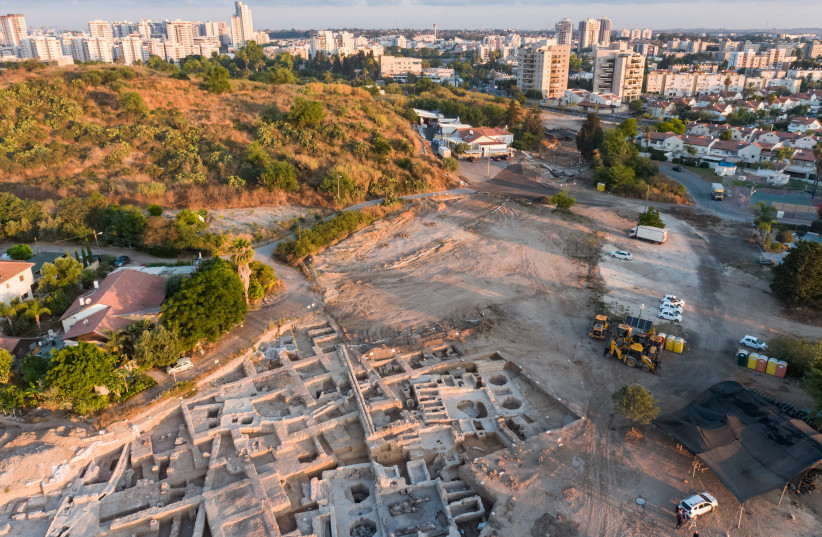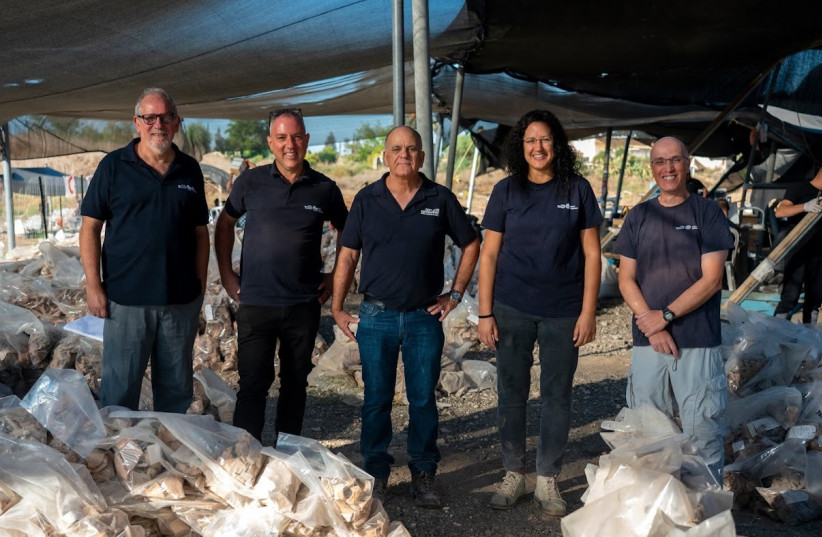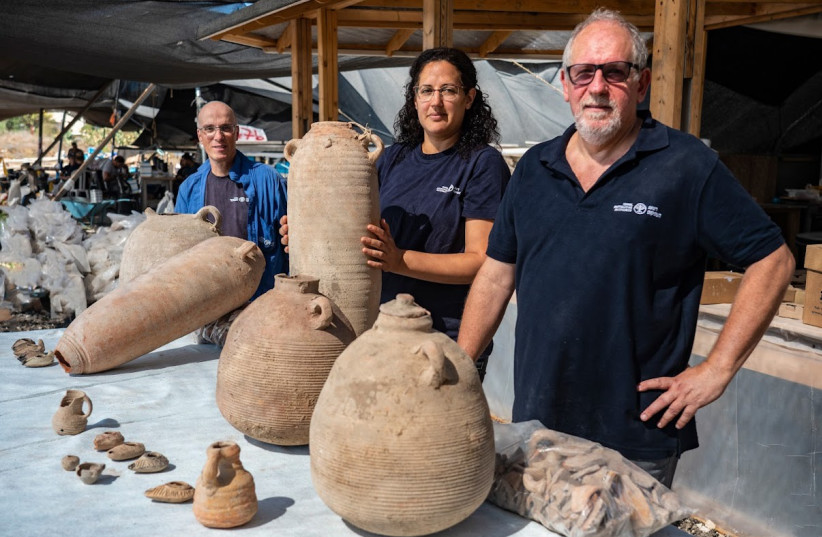 Largest wine factory in the world from Byzantine period unearthed in Yavne
Largest wine factory in the world from Byzantine period unearthed in Yavne
ROSSELLA TERCATIN
The sophisticated facility was probably able to produce as many as two million liters of wine per year.
.

A sophisticated wine production facility, the largest from the Byzantine period ever found in the world, was unearthed in Yavne, the Antiquities Authority (IAA) announced Monday.
The factory was used to produce the legendary regional wine, known as Gaza or Ashkelon wine after the ports from where it was exported all over the Mediterranean. It included five impressive wine presses, large treading floors where the grapes were crushed, two huge octagonal vats, storage rooms and kilns to produce jars to conserve the wine.
.
The facility is said to have produced as much as two million liters of wine annually.
Yavne is located in central Israel and was an important city some 1,500 years ago was, according to IAA archaeologist Dr. Jon Seligman, co-director of excavation with Dr. Elie Haddad and Liat Nadav-Ziv.

“Yavne was important enough to be put in a map from the period with Jerusalem, featuring three large churches,” he said. “First and foremost, it was a Christian town. But we also know that there were populations of Jews and Samaritans living there during the same time period. It had a bishop. It was located in what at the time was on a major road, called the sea highway, which went from north to south, and on its junction with the Sorek River.”
The wine factory’s remains were first uncovered during a salvage excavation prior to the construction of a new residential and commercial neighborhood. In Israel, all development projects must be accompanied by such excavations.
“We have been exposing an industrial area of ancient Yavne,” Seligman said. “We found remains of other industries, for example, producing glass and metal. We also found remains from other periods, such as a house from the ninth century and some other buildings from the interim period between the Byzantine and Islamic periods.”

In addition, the remains of another wine press was uncovered, dating back some 2,300 years ago, during the Persian period, testifying to the city’s long tradition in wine production, as stated in the Mishna, which mentions a vineyard of Yavne.
After the destruction of Jerusalem at the hands of the Romans in 70 CE, Rabban Yochanan ben Zakkai moved the Sanhedrin, the supreme court and legislative body in all matters of Halacha, to Yavne.
So far, the archaeologists have not excavated the area where the ancient city center was located, and they have not uncovered the remains of the churches, Seligman said.
“We did find some traces of their presence, such as pieces of marbles and columns,” he said.
The wine produced in Yavne was very well known and prestigious, Seligman said.
“It was a light, white wine,” he said. “We have found many wine presses in Israel, but what is unique here is that we are talking about a cluster of five huge ones, especially beautiful in their architecture.”
In addition, the archaeologists uncovered the remains of thousands of jars to store, age and export the wine, Seligman said.
“They have a specific and very recognizable shape,” he said. “The same jars were found in many places around the region, including Egypt, and we know that they were used for exporting the wine.”
Zawartość publikowanych artykułów i materiałów nie reprezentuje poglądów ani opinii Reunion’68,
ani też webmastera Blogu Reunion’68, chyba ze jest to wyraźnie zaznaczone.
Twoje uwagi, linki, własne artykuły lub wiadomości prześlij na adres:
webmaster@reunion68.com
